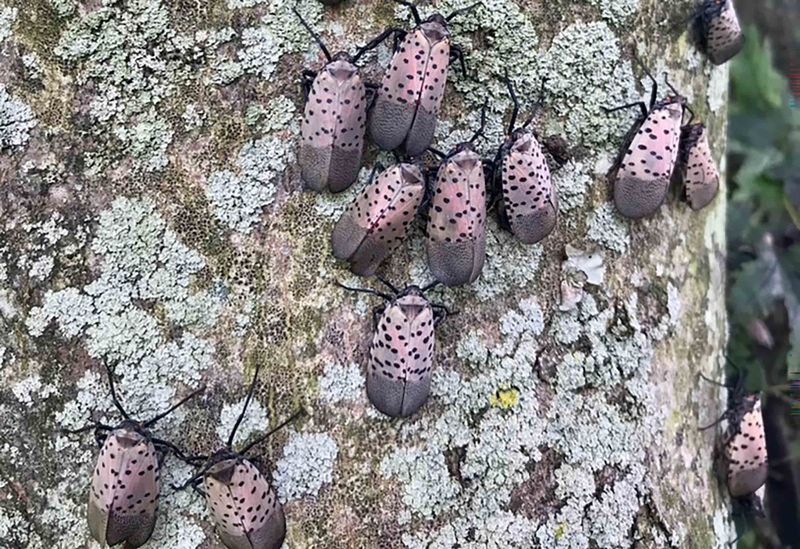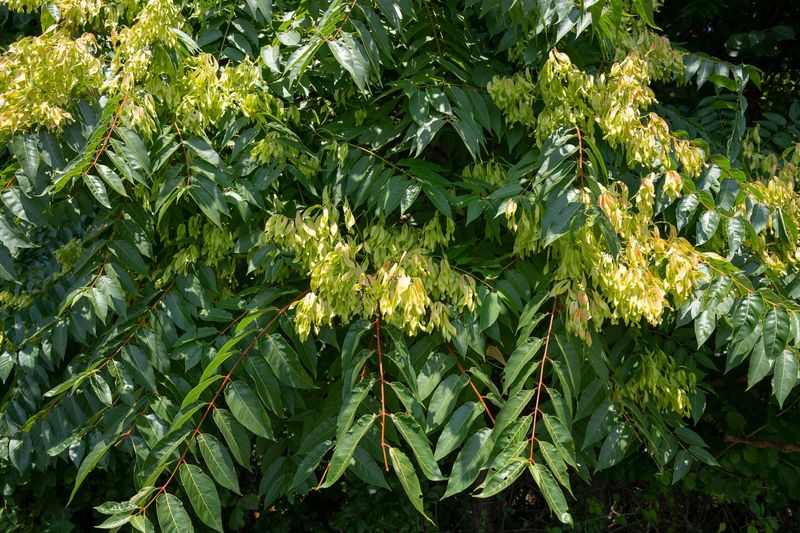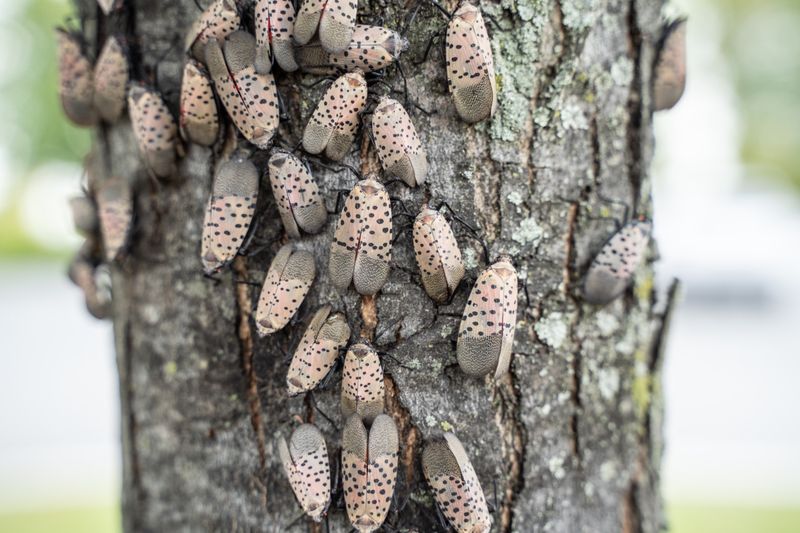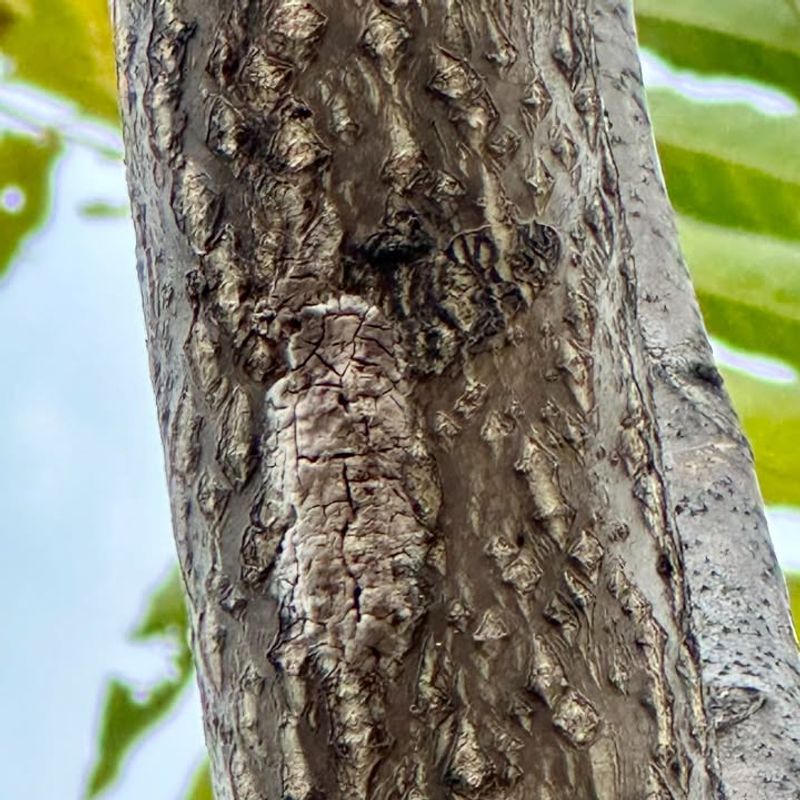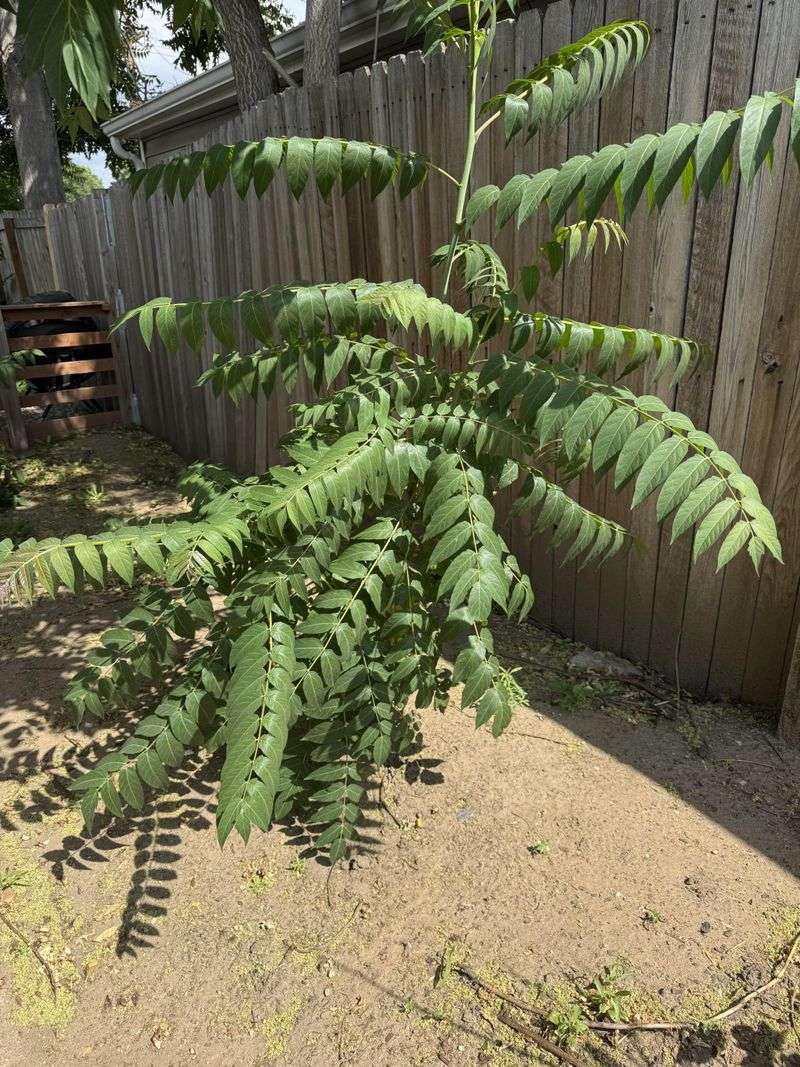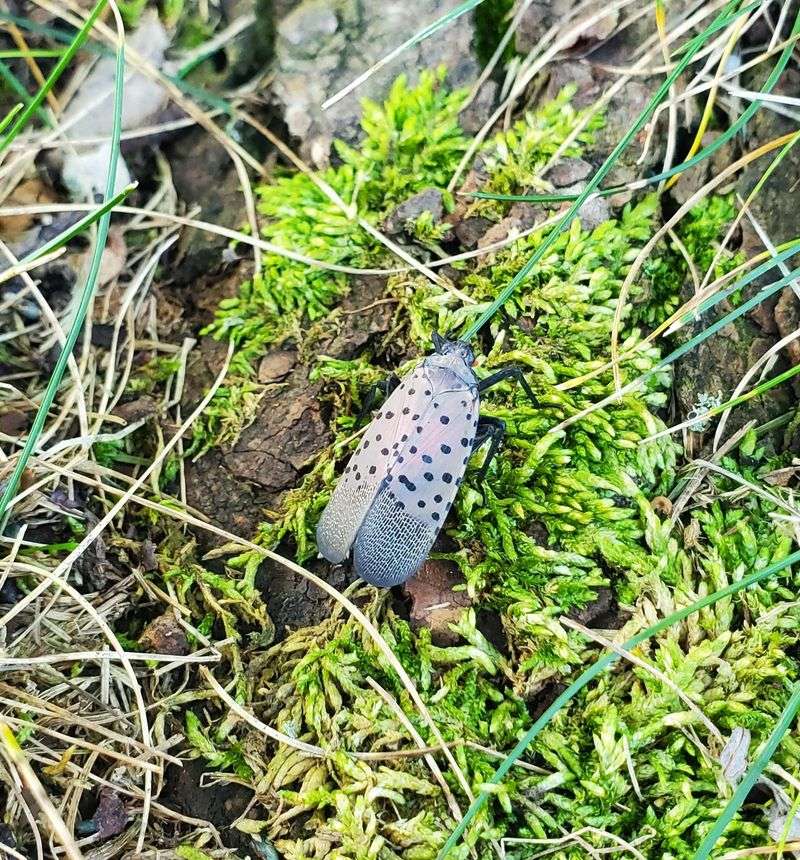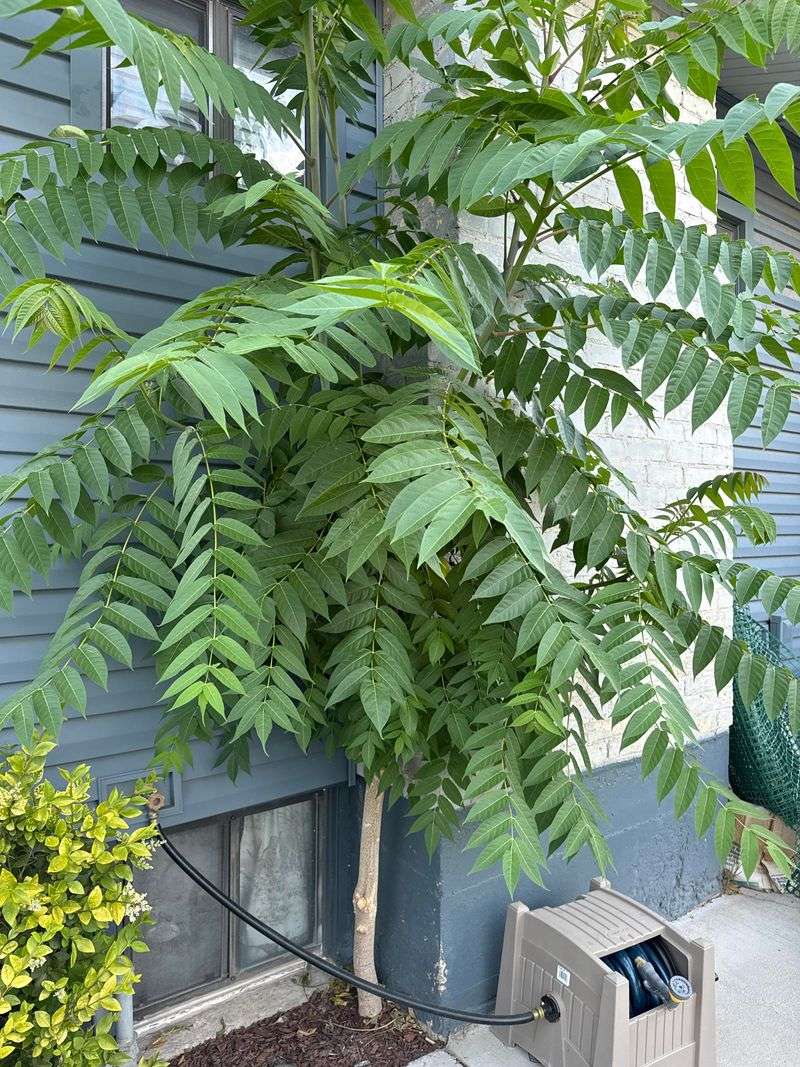An Illinois yard can remain calm and healthy until one specific tree takes root. Then lanternflies arrive in large numbers, stay close, and spread outward with alarming speed. The tree offers ideal sap and shelter, and the insects treat it as a central hub.
Removal of this single species can slow the invasion dramatically. The problem begins with tree of heaven.
1. Tree Of Heaven Acts As A Lanternfly Nursery
Lanternflies absolutely love laying their eggs on Tree of Heaven bark. Female lanternflies find the rough texture perfect for attaching their egg masses, which can contain 30 to 50 eggs each.
When spring arrive, those eggs hatch into tiny nymphs that immediately start feeding on the tree’s sap. By keeping this tree around, you’re basically providing a five-star hotel for the next generation of pests.
Removing these trees breaks the breeding cycle and makes your Illinois property far less attractive to these invasive bugs.
2. The Tree Releases Chemical Signals That Attract Swarms
Scientists discovered something fascinating about why lanternflies prefer this particular tree species. Tree of Heaven produces specific chemical compounds that act like a dinner bell for spotted lanternflies across your Illinois neighborhood.
When the tree is stressed or damaged, it releases even stronger chemical signals. Lanternflies can detect these scents from considerable distances, drawing massive swarms directly to your yard.
Getting rid of this tree eliminates the chemical beacon that brings these pests to your property in the first place.
3. Lanternfly Feeding Creates Sticky Honeydew Everywhere
After lanternflies feed on Tree of Heaven sap, they excrete a sugary substance called honeydew. This sticky mess drips onto everything below, including your patio furniture, cars, and other plants.
Honeydew isn’t just annoying—it also attracts wasps, ants, and other insects to your yard. Even worse, black sooty mold grows on the honeydew, creating ugly stains on surfaces and blocking sunlight from reaching your plants.
Without Tree of Heaven, lanternflies have less reason to gather and create this disgusting problem.
4. Your Neighbors’ Gardens Suffer When Populations Explode
Lanternflies don’t just stay on Tree of Heaven—they spread to nearby plants once populations grow too large. Fruit trees, grape vines, and vegetable gardens become their next targets, causing serious agricultural damage.
When your Illinois yard harbors Tree of Heaven, the lanternfly population explodes and spills over into neighboring properties. Your community’s gardens, orchards, and landscaping all pay the price for one problematic tree.
Being a responsible neighbor means removing trees that create pest problems for everyone around you.
5. Tree Of Heaven Outcompetes Native Illinois Plants
Beyond attracting lanternflies, Tree of Heaven is an aggressive invasive species that harms Illinois ecosystems. It grows incredibly fast and produces chemicals that prevent other plants from thriving nearby.
Native trees, wildflowers, and shrubs struggle to survive when Tree of Heaven takes over an area. Birds and beneficial insects lose the native plants they depend on for food and shelter.
Removing this invasive tree helps restore balance to your local environment while simultaneously reducing lanternfly habitat.
6. Control Efforts Become Nearly Impossible With This Tree Present
Many Illinois homeowners try spraying pesticides or setting traps to control lanternfly populations. Unfortunately, these efforts prove largely ineffective when Tree of Heaven continues providing perfect breeding and feeding grounds.
Lanternflies keep returning to these trees no matter how many you eliminate through other methods. You’re fighting a losing battle as long as their favorite host plant remains standing in your yard.
Professional pest management experts agree that removing Tree of Heaven is the most effective long-term solution for lanternfly problems.
7. The Tree Spreads Rapidly Through Underground Root Systems
Tree of Heaven doesn’t just grow from seeds—it sends out underground roots that pop up as new trees throughout your Illinois property. One tree can quickly become a grove of dozens if left unchecked.
Each new tree becomes another potential lanternfly magnet, multiplying your pest problems exponentially. The aggressive root system also damages sidewalks, foundations, and underground utilities as it spreads.
Early removal prevents this invasive tree from establishing an extensive root network that becomes increasingly difficult and expensive to eliminate completely.


